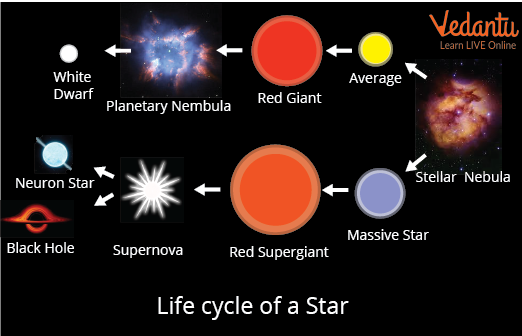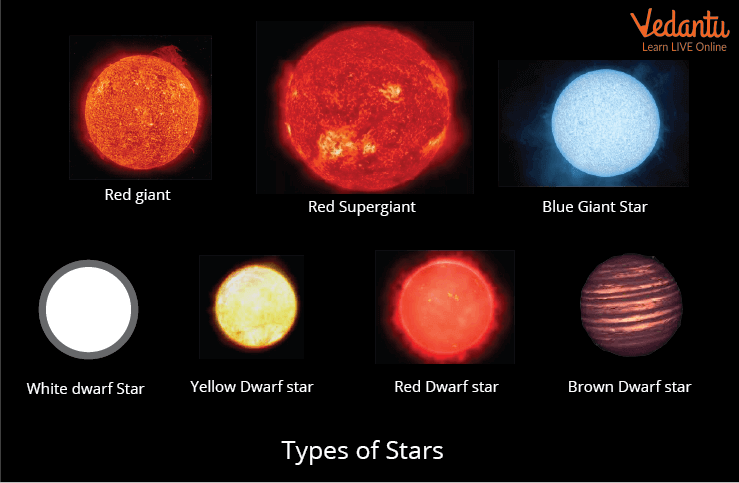




Introduction to Stars
Stars are very large and attractive balls of gases. There are numberless Stars in this universe. Stars can be seen without telescopes. The Sun is the planet's nearest star. Stars always shine in the night sky. Most of the stars are very far away. Stars are found in large groups which are called galaxies.
This galaxy contains hundreds of millions and billions of stars. There are also many galaxies in this whole world. All Stars are made up of a gas called hydrogen. Hydrogen produces a big amount of energy. In the stars the blue stars are normally very hot and the red stars are very cool. In the night sky, a blue-white star is the brightest object. The star comes to life with very imaginative and enjoyable activities.

The Night Sky
What is a Star?
Stars may appear as small-scale twinkling marks in the night sky but they are made up of wide burning balls of gas. Just think, it is a bright night and you are sitting outside, looking up at sparkling lights in the dark sky above you. You think about those stars and what they are made up of.
Stars twinkle because of our earth’s atmosphere. Stars start to shine sharp and brighter. Stars generate their heat, light and energy. Stars' colour always depends upon how hot it is. Stars have their own light.
Life Cycle of a Star

Life Cycle of a Star
A star starts its life cycle in a nebula or a district of gas and dust in space. Stars much like humans get taller and change through these stages of life. Let's assume the different stages in the life cycle of a star. The above picture can better explain the life cycle. In space, Stars much like humans get taller and change through these stages of life. In the following parts, let’s assume the different stages in the life cycle of a star. The below picture can better explain the life cycle.
How Many Stars are there in the Sky?
It’s impossible to know how many stars exist in this universe. Look up at the sky on a clear night and you will see thousands of stars. A few types of stars are as follows-
Red Giant Star
Red Supergiant Star
Blue Giant Star
White Dwarf Star
Yellow Dwarf Star
Red Dwarf Star
Brown Dwarf Star

Types of Stars
Facts about Stars
The night sky is full of bright stars and galaxies.
Adults and children both enjoy the vision of the night sky.
The milky way is the galaxy.
Skies are dark and clear and the milky way appears.
The most common type of Star is a Red Dwarf Star which burns very slowly.
The stars you see in the night sky are brighter, sharper and bigger.
Stars are different in colour depending on their temperature.
The sun is the first closest star to the earth.
‘Twinkle Twinkle little star…….’ is a real poem or song but stars do not actually twinkle.
Stars are made up of the same material.
Stars are at a complete level.
Characteristics of Stars
A star can be defined by brightness.
A star can be defined by colour.
A star can be defined by top temperature.
A star can be defined by size.
A star can be defined by mass.
Why do Stars Shine?
The stars shine in the night sky because of the result of our atmosphere. When the starlight comes in, our atmosphere is affected by air current. The shining of stars takes place due to the atmospheric refraction of the star's light. They have large fusion activators in their cores releasing a great amount of energy. They spark with the light throwback from a star. Stars shine by flaming hydrogen into helium.
Summary
In this article, we have learnt the definition of stars. We talked about the life cycle of a star and some characteristics and facts about it. We also named different types of stars and a very important question related to the shining of stars was also discussed above.
FAQs on Star for Kids - Facts and Details
1. Which is the closest star and why?
Sun is the closest star to the earth. The sun seems to travel across the sky as viewed from Earth during the day. It disappears at night. Without the sun there would be no daylight. This is because the earth is spinning in the direction of the east. We see the sunset eight minutes after the result has taken place. Sun appears to rise in the east in the morning and scale longer and longer in the sky.
2. Why do stars only come at night?
At night, when the sky is black, the light of the stars can be visible to us. During the day our star, the sun, makes our sky so bright that’s why we cannot see them during the day. We can only see them at night and there is no sunlight at night. Even so, during the night the sunlight grows less and the day turns into light. As a result, the stars are covered up from our outlook during the day.
3. What is a star?
An astronomical object known as a star is made up of a bright plasma spheroid that is held together by gravity. The Sun is the star that is closest to Earth. Other stars are also visible at night with the unaided eye, but because of their great distances from Earth, they appear as stationary points of light.









